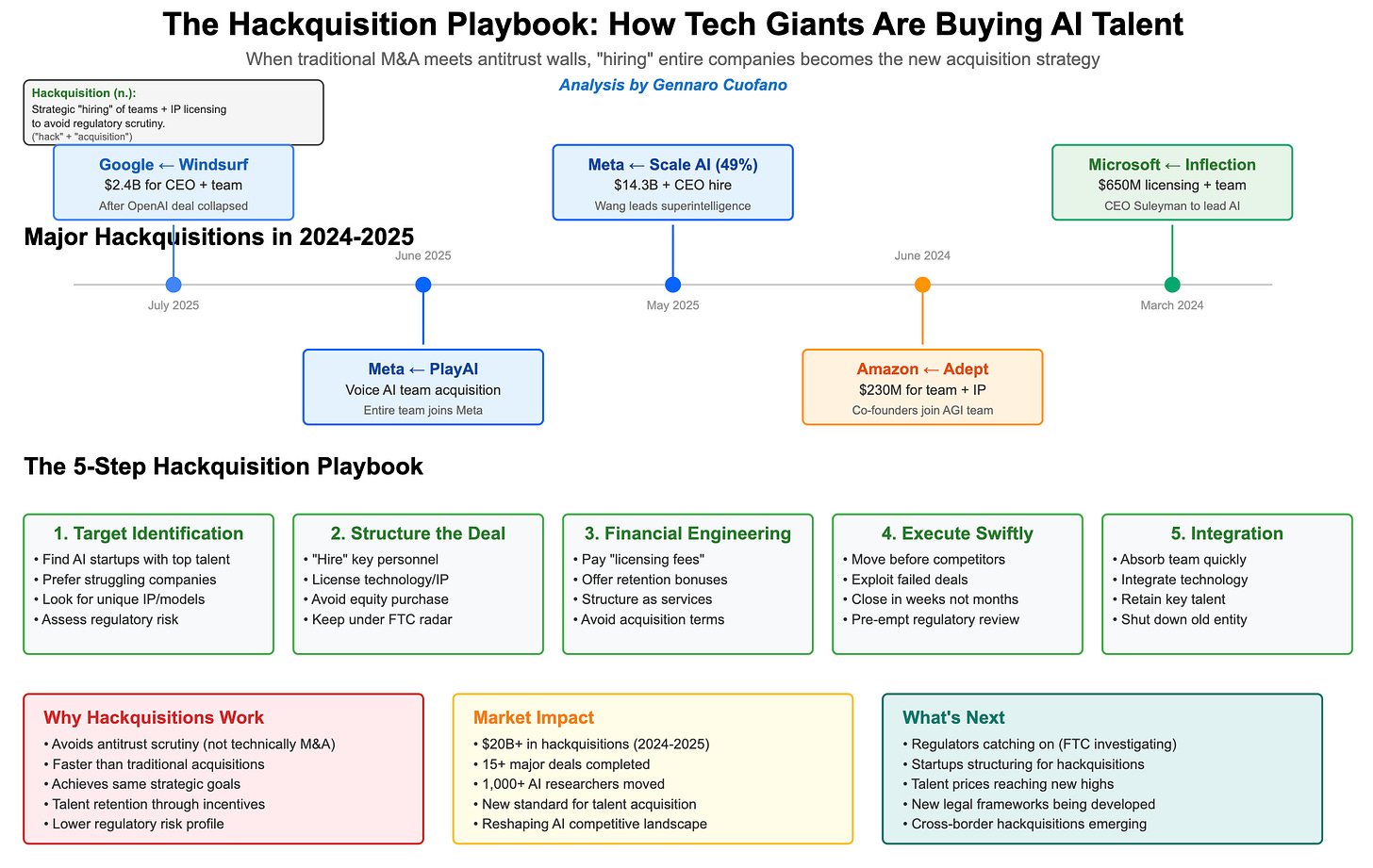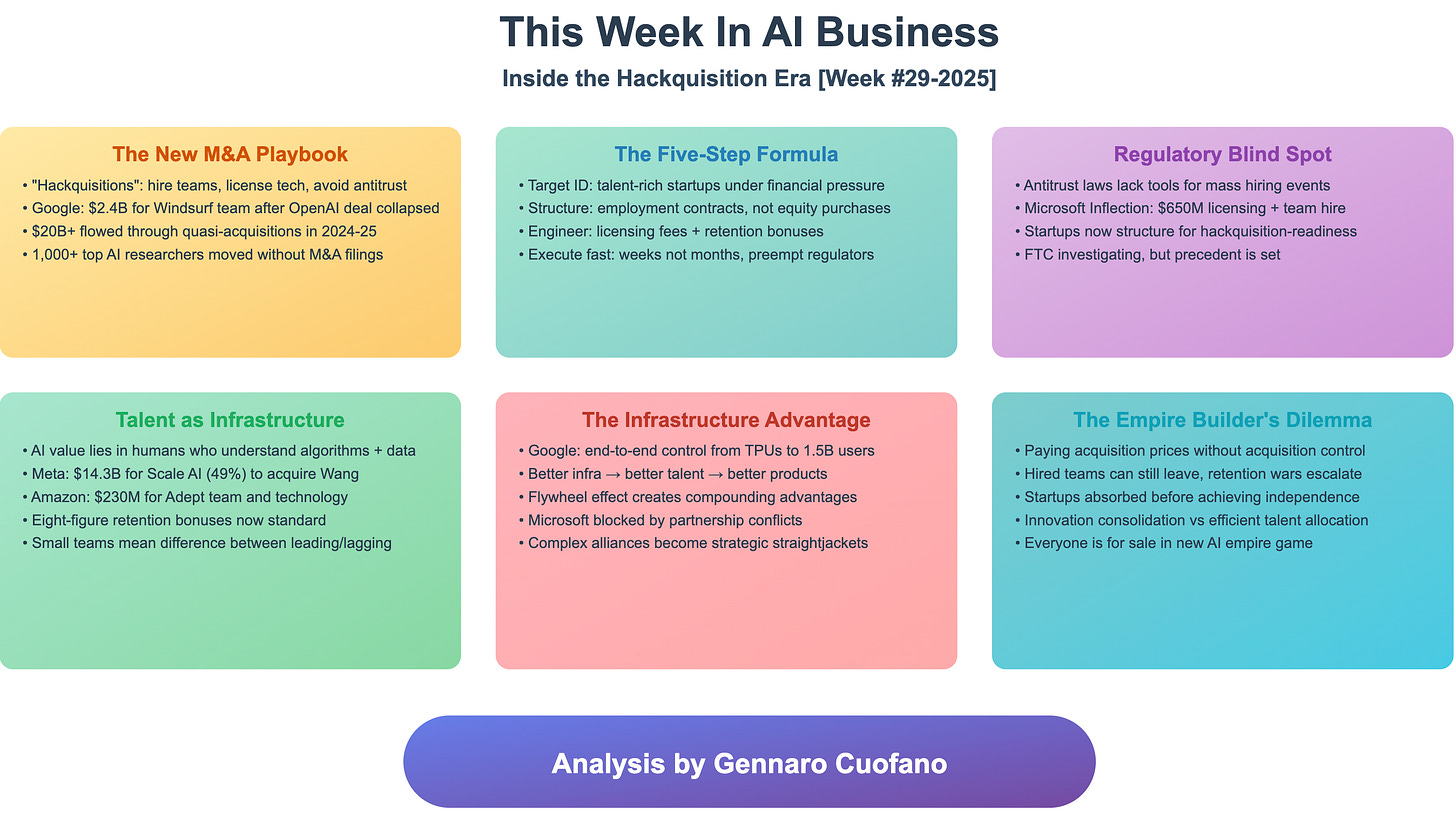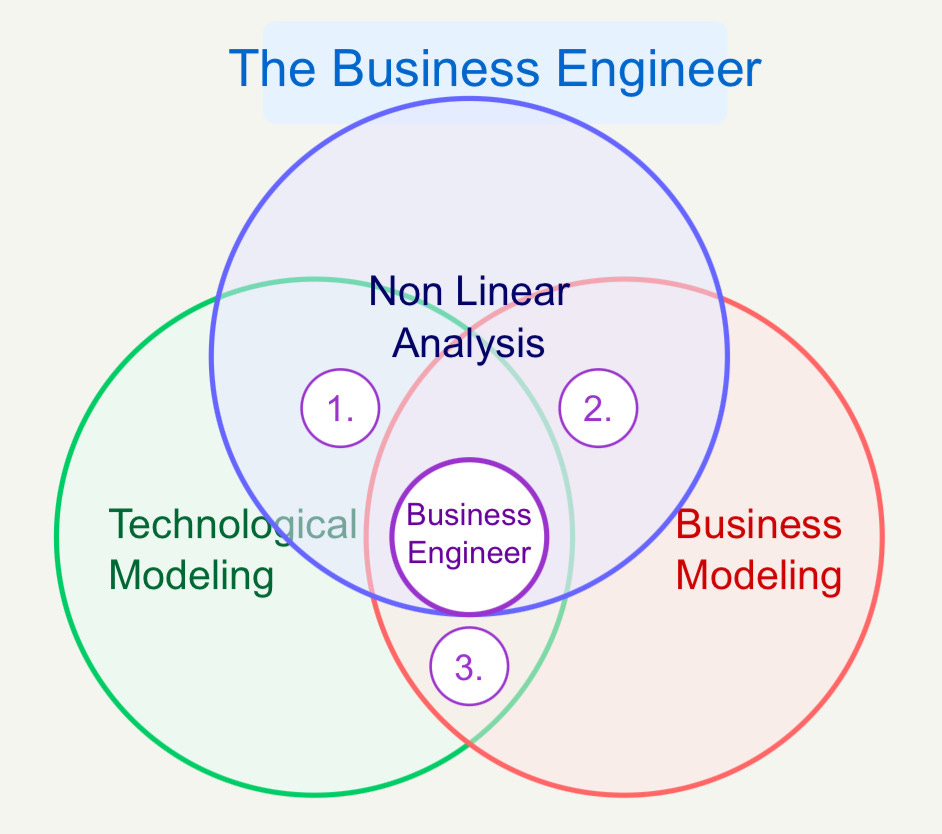This Week In AI Business: Inside the Hackquisition Era [Week #29-2025]
In the summer of 2025, something strange happened in Silicon Valley. OpenAI was about to close a $3 billion acquisition of Windsurf, a promising AI coding startup. The deal had been months in the making, terms were agreed, and celebration champagne was already on ice. Then, suddenly, it all fell apart.
Within 48 hours, Google swooped in with a different offer: $2.4 billion—not to buy the company, but to "hire" its CEO and entire engineering team.
Welcome to the era of the hackquisition, where the world's most powerful tech companies have discovered a loophole in the traditional M&A playbook. When you can't acquire a company due to antitrust concerns, you hire all the employees and license their technology.
Same outcome, different paperwork.
The New Rules of Empire Building
This is the full picture of what I cover this week!
The weekly newsletter is in the spirit of what it means to be a Business Engineer:
We always want to ask three core questions:
What’s the shape of the underlying technology that connects the value prop to its product?
What’s the shape of the underlying business that connects the value prop to its distribution?
How does the business survive in the short term while adhering to its long-term vision through transitional business modeling and market dynamics?
These non-linear analyses aim to isolate the short-term buzz and noise, identify the signal, and ensure that the short-term and the long-term can be reconciled.





